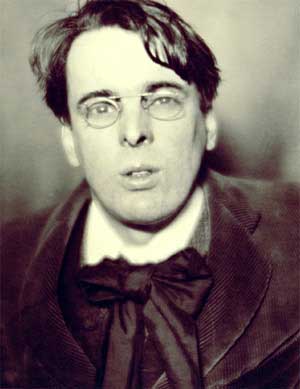
In 1899 they staged the first of three annual productions in Dublin, including Yeats's The Countess Kathleen. He, Lady Gregory, and her neighbor, Edward Martyn, devised plans for promoting an innovative, native Irish drama. In the summer of 1897, Yeats enjoyed his first stay at Coole Park, the County Galway estate of Lady Augusta Gregory.

The Abbey Theatre The turn of the century marked Yeats's increased interest in theater, an interest influenced by his father, a famed artist and orator. Yeats's 1899 poetry collection The Wind Among the Reeds featured several poems employing occult symbolism. Yeats remained an active member of the Golden Dawn for thirty-two years and achieved the coveted sixth grade of membership in 1914, the same year that his future wife, Georgiana Hyde-Lees, joined the society.
WILLIAM BUTLER YEATS YOUNG SERIES
The society offered instruction and initiation in a series of ten levels, the three highest of which were unattainable except by magi, who were thought to possess the secrets of supernatural wisdom and enjoy magically extended lives. In 1890 he joined the Golden Dawn, a secret society that practiced ritual magic. Gonne also shared Yeats's interest in occultism and spiritualism. With Gonne's encouragement, Yeats redoubled his dedication to Irish nationalism and produced such nationalistic plays as The Countess Kathleen, dedicated to Gonne, and Cathleen ni Houlihan (1902), which featured Gonne as the personification of Ireland.

Yeats soon fell in love with Gonne and wrote many of his best poems about her. It became clear to the Irish that they would not find independence through negotiation alone. In the 1880s and 1890s, Irish politician Charles Stewart Parnell managed to introduce two bills on Irish Home Rule in British Parliament, but both were defeated. Irish nationalism had grown in fits and starts since 1800, when Ireland was forcefully joined with Great Britain in the British Act of Union. The most important event in Yeats's life during these London years, however, was his acquaintance with Maud Gonne, a beautiful, prominent young woman passionately devoted to Irish nationalism-the establishment of an Irish nation independent of British rule. In addition, he wrote book reviews, usually on Irish topics. At the end of 1886, Yeats moved to London, where he composed poems, plays, novels, and short stories-all with Irish subjects, characters, and scenes. The Influence of Maud Gonne on Yeats's Nationalism and Spiritualism The year 1885 was important in Yeats's early adult life, marking the first publication of his poetry (in the Dublin University Review) and the beginning of his important interest in the occult. He was so slow in learning to read that he was thought to be simple His formal education, however, was not so enriching. He rode about the Sligo countryside on a red pony and began to immerse himself in the fairy lore of the local peasants. The young Yeats was dreamy and introspective but by no means housebound. The hills and lakes and fens about the busy West of Ireland seaside town became Yeats's spiritual home in childhood and remained so all his life. His mother's family were ship owners and millers in and about Sligo. The poet was proud to belong to the Anglo-Irish Protestant minority in both strains of his blood. He was the oldest of the four surviving children of the painter-philosopher John Butler Yeats and his wife, Susan Pollexfen Yeats. Yeats was born in the Dublin suburb of Sandymount on June 13, 1865. He was equally firm in adhering to his self-image as an artist.

Although he lived in London for fourteen years of his childhood (and kept a permanent home there during the first half of his adult life), Yeats maintained his cultural roots by featuring Irish legends and heroes in many of his poems and plays. Most members of this minority considered themselves English people who merely happened to have been born in Ireland, but Yeats staunchly affirmed his Irish nationality. Works in Biographical and Historical ContextĪn Anglo-Irish Protestant Upbringing Yeats belonged to the Protestant, Anglo-Irish minority that had controlled the economic, political, social, and cultural life of Ireland since at least the end of the seventeenth century. He received the 1923 Nobel Prize in Literature “for his always inspired poetry, which in a highly artistic form gives expression to the spirit of a whole nation,” as the citation read. William Butler Yeats was an Irish poet and playwright closely associated with Irish nationalism. MAJOR WORKS: The Wind Among the Reeds (1899) The Wild Swans at Coole (1917) A Vision (1925) The Tower (1928) The Winding Stair and Other Poems (1933) Overview


 0 kommentar(er)
0 kommentar(er)
